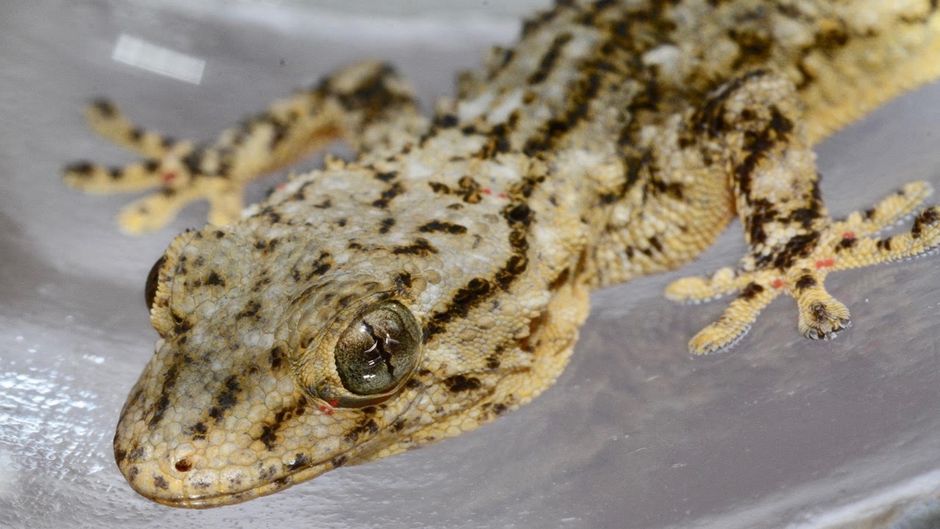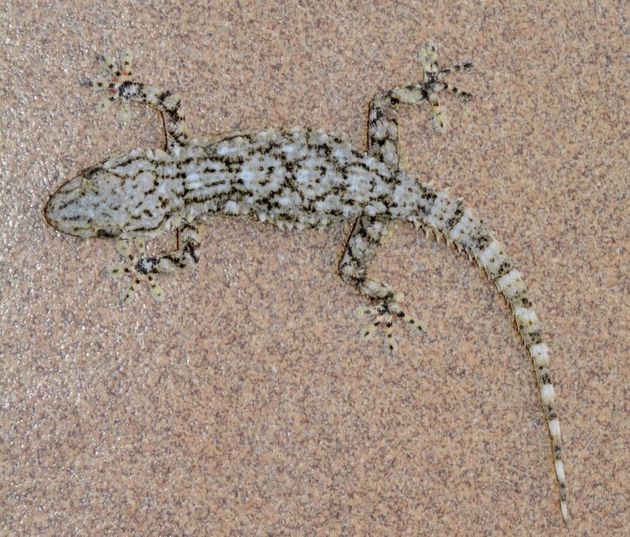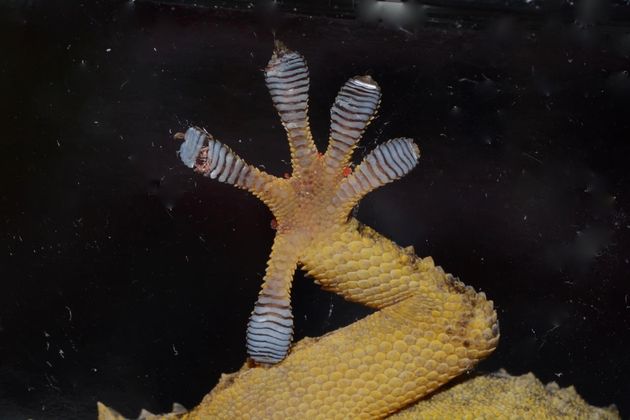The common name “gecko” occurs in some versions of the Bible. It refers to a small saurian with a large head and eyes, and skin which is granular.
 Gecko. / Photo: Antonio Cruz
Gecko. / Photo: Antonio Cruz
Of the animals that move along the ground, these are unclean for you: the weasel, the rat, any kind of great lizard, the gecko, the monitor lizard, the wall lizard, the skink and the chameleon.
(Lv. 11:29-30)
The common name “gecko” occurs in some English versions of the Bible. It refers to a small saurian with a large head and eyes, and skin which is granular due to the many tubercles covering it. Its pupils are vertical, and it can’t close its eyes as it has no eyelids.
The underside of its toes possesses many transversal membranes which allow it to grip walls and roofs and thus climb them easily. They feed on small insects and spiders, while they are prey to predators such as owls, rats and cats.

[photo_footer] Photo: Antonio Cruz. [/photo_footer]
In Israel there are known to be three species of geckos belonging to the Phyllodactylidae family (the yellow large-toed gecko, Ptyodactylus hasselquistii hasselquistii; the grey gecko with black and white spots, P. puiseuxi; the Sinai gecko, P. guttatus). There are also nine other species that belong to the Gekkonidae family (the pink Mediterranean gecko, Hemidactylus turcicus; the rock gecko, Bunopus tuberculatus; the rough-tailed gecko, Cyrtopodion scabrum; the Kotschy gecko, Mediodactylus kotschyi; the arch-toed gecko from the Hemon, Mediodactylus amictophole; the sand gecko, Tropiocolotes nattereri; the Lichtenstein short-toed gecko, Stenodactylus stenodactylus stenodactylus; the Anderson short-toed gecko, Stenodactylus petrii; and, finally, the short-toed gecko from the Middle East, Stenodactylus doriae.[1]
The ancient Hebrews were very familiar with these small reptiles as they were relatively plentiful in the dry desert regions that they knew very well, and also inside their homes. Geckos can survive for long periods practically without eating anything, which has enabled them to make their way, on ships, to many distant regions of the world, far from their original habitat.
As regards the gecko that is most common in Spain (Tarentola mauritanica), folk legend had it that its spit could cause baldness and that its bite was venomous. This is of course false. In other cultures it was believed these small saurians would get into cupboards and eat clothes. What they do, in fact, is eat the moths that feed on clothing.

[photo_footer] Photo: Antonio Cruz. [/photo_footer] According to the Bible, every living thing on the planet, even if considered unclean by the Hebrews, like the geckos, deserves our respect. The fact that an animal is intended as food does not mean that it should not be treated with respect as a creature made by God.
The mistreatment of animals, or indifference and cruelty towards any living creature, flies in the face of the spirit of Scripture. Besides, people who treat animals brutally sooner or later end up treating human beings with the same brutality. Thus, abuse directed at any creature undermines human dignity and is contrary to God’s will.
[1] Bar, A. & Haimovitch, G. 2011, A Field Guide to Reptiles and Amphibians of Israel, Herzliya, Israel, pp. 38-59.

Las opiniones vertidas por nuestros colaboradores se realizan a nivel personal, pudiendo coincidir o no con la postura de la dirección de Protestante Digital.
Si quieres comentar o